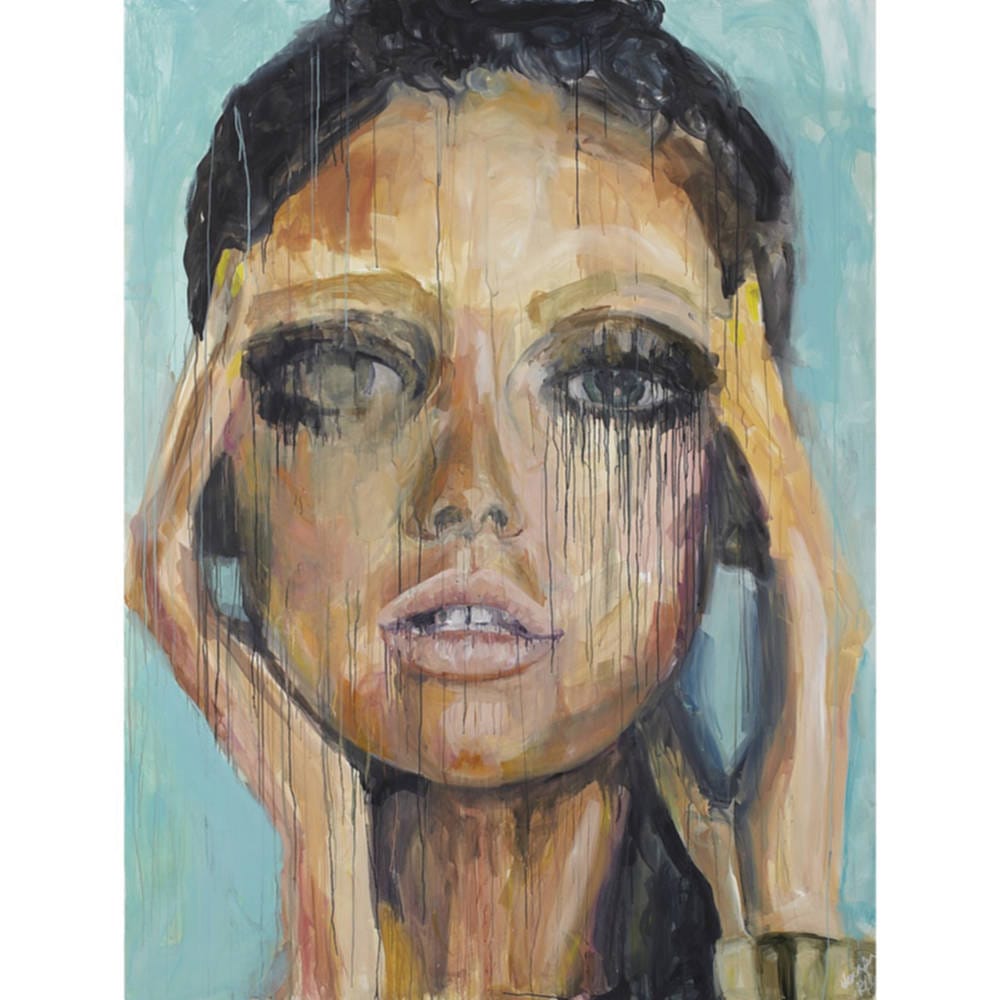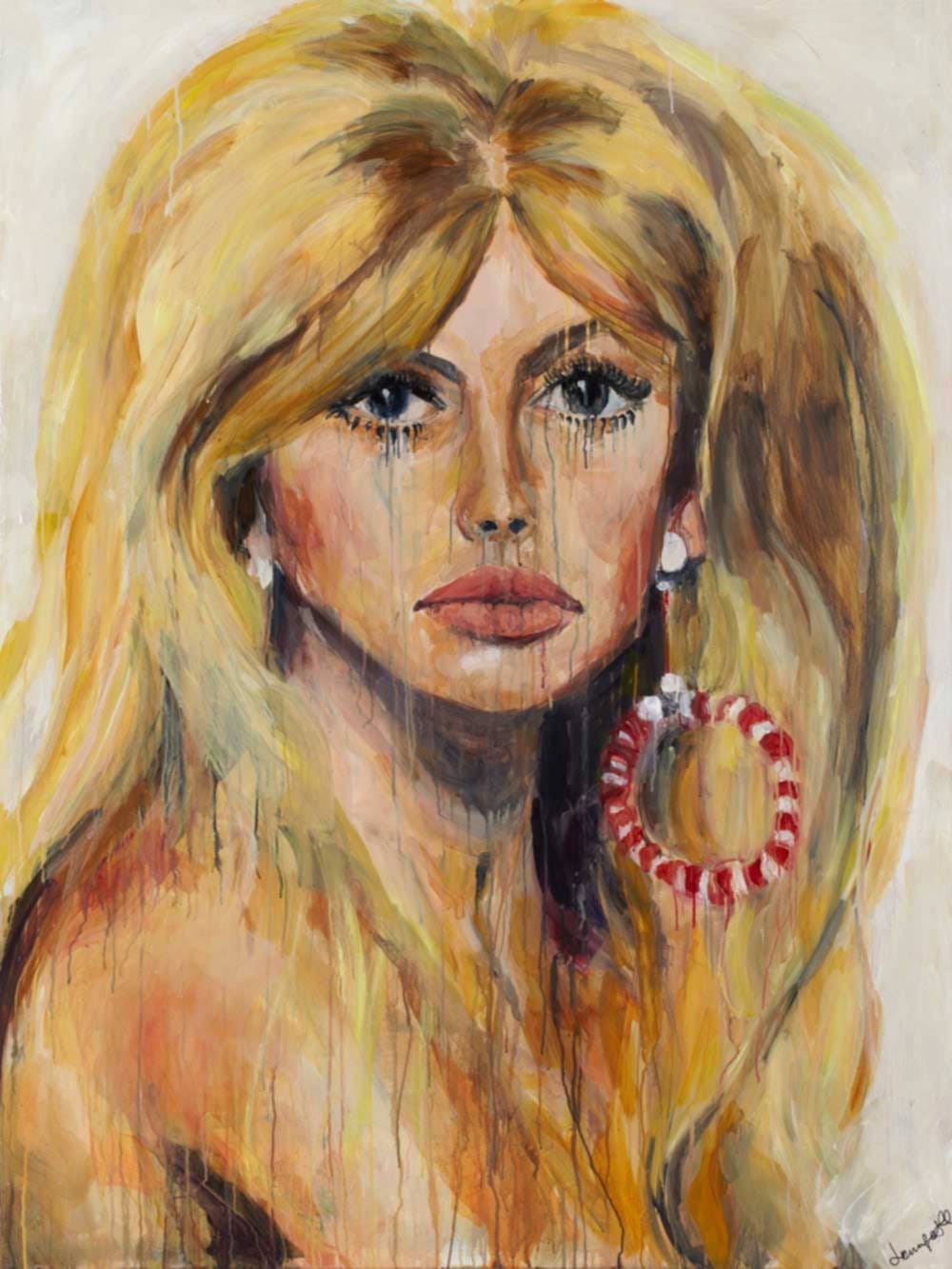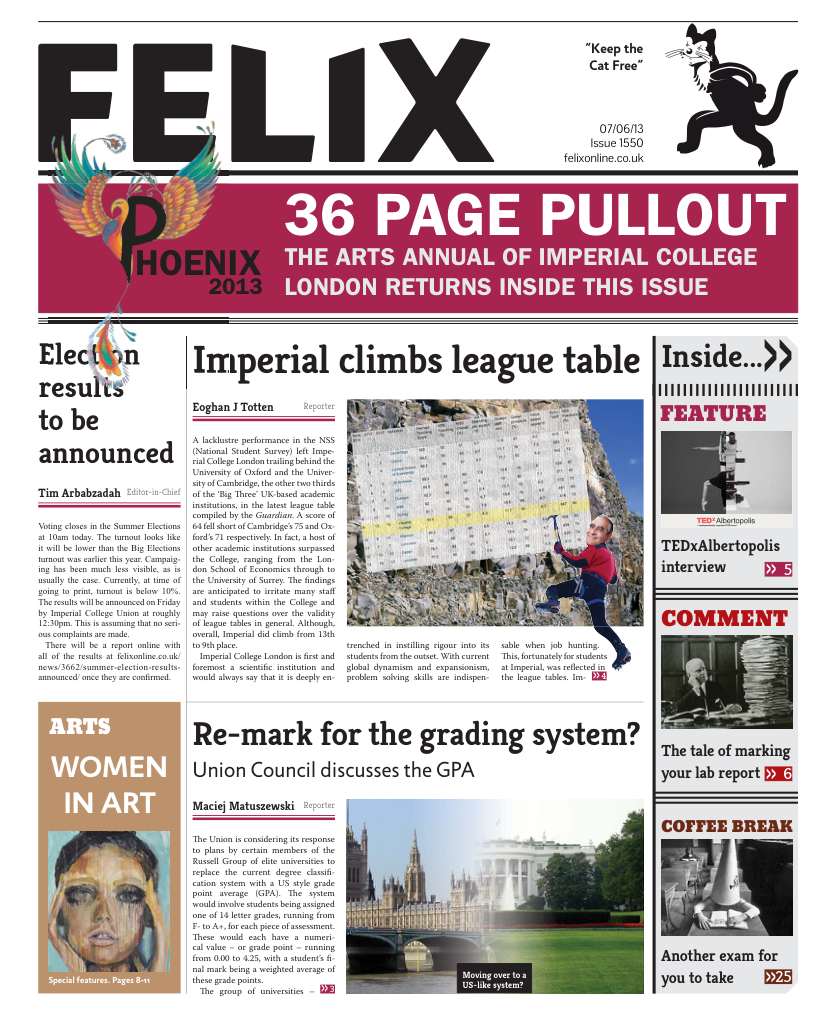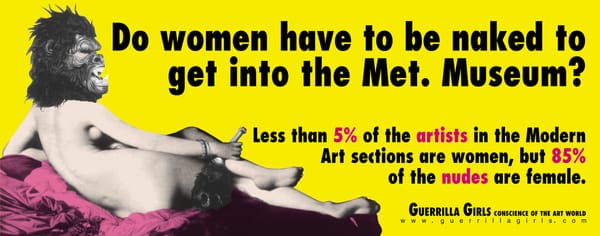Beauty and the beholder’s eye
Meredith Thomas interviews Jennifer Louise Martin on the male gaze

I met Jennifer Louise Martin in the food hall at Selfridges. To get there I had to walk through the cosmetics hall. Through the haze of perfume, immaculate girls stared out with twinkling eyes, watching my progress as I picked my way though counters stacked with foundation, mascara and lipsticks. I had wondered whether Jennifer was setting herself up to make a point. As it emerged, she is far too straightforward for intricate ploys.
Jennifer has just finished her first solo show in London at the Strand Gallery. Her rich textured paintings depict glamour models plucked from the pages of magazines. The images are as layered conceptually as they are in paint, laced with subtext and questions about the illusory nature of perfection and the affliction of beauty.
Meredith Thomas: Can I start of by asking how you got into art?
Jennifer Louise Martin: I went to St Martins for a foundation in 1999, then I actually did a psychology and neuroscience degree for three years. After that I went back to St Martins in 2005. I really loved St Martins and my foundation course is really what got me into oil painting. I fell in love with paint and ever since then I never stopped doing it. In between the years I was studying psychology. I always tried to continue my art, but painting fell by the way-side because I didn’t have the time. I didn’t really have the space or studio to paint. I did a bit of fashion and made my own clothes. I was always creative but I went back to paining when I graduated university. I became much more artistic having really missed my painting. I taught myself quite a lot because I had to keep it going.
M: How would you say that your study of psychology has informed that work you do?
J: It definitely informs the work I do, because I am interested in the psyche of the female mind. How women perceive beauty, how women think about it and try and obtain it... What does this actually mean to women? These are the questions I am interested in. There is a whole market out there, makeup, plastic surgery, all these thing that women think about, spend money on. The psychology behind beauty really informs my work, from a women’s point of view.
M: How long had you been painting before these shows came up?
J: It would be about ten years on-and-off. I’ve done a lot of residencies where I have gone and lived and painted in a studio, then shown my work at the end. Since about 2005 I have been interested in female faces and portraits from magazines and photographs. Its been a theme for a long time.
M: So how did that develop?
J: It started when I went to Los Angeles. That inspired me a lot because, obviously, you’ve got the whole plastic surgery culture and the theme of beauty is really prominent. My painting style changed quite a bit there, it became a bit more photorealistic. You can see the faces and features are more prominent, the lips and the eyes.
M: I want to get into this idea of beauty a bit more. Do you see beauty in the models that you paint?
J: Yeah, but the images I choose, are a huge part of the process. It takes me a long time to find a picture to work from. I will scour through heaps of magazines and it would be something about the image that captures me, either the face, the structural features, or just the way the photograph is taken, the colour or the composition. Mainly it is because I will find that person beautiful.
M: So is it the person or the photograph?
J: Not the person, the face! So probably the photography, the way that they have been shot or how it looks to me. It could be the way the photograph is taken, you’re right, it could be that.
M: Do you ever get the same reaction to something in life?
J: I do get that. It has happened a couple of times where I have actually approached someone in a restaurant or at work where their face has just popped out at me and I have asked to paint them. This happened recently. She had such eye catching features that I approached her in a restaurant. That’s the first time I’ve done that. She is now my next sitter. I will do studies from life and then I take a picture and work from that. So this time, with the specific subject I’m working from my own photograph. You know It could be an object that is beautiful. For me it just happens to be faces. It could stem back from years ago; I wanted to be a model when I was about eleven.
M: This is probably too simplistic a question but, do you think we are too beauty obsessed in this society?
J: Oh, totally yeah. And you could argue that I am too.
M: If you’re changing your approach to painting a real person, is that going to change the way you react and respond, because you are not seeing the subject through the lens of another photographer?
J: I think it will do,because it’s more first-hand isn’t it? The fact that I have taken the photo means it’s all a bit closer to my own hand. But what will happen is that it will be a much more natural picture, because there is no lighting, no staging. So we’ll see how the painting turns out. It will be different.
M: How do you start a painting?
J: I look at the image for quite a long time. I will absorb the colours straight away, I will immediately know my colour palette. As you can see I use a lot of tones of the same colour. I like to add depth to give the image some kind of story, it adds a personality to the model, there is a story behind her, sort of paralysed by perfection. You can see they are pensive, or thinking. There is this kind off destructive self. That is what I am thinking while I am painting which is why you get this challenging aspect to the painting.

M: So thereis an element of empathising with the subject, even through so many layers of paint and another persons lens?
J: Absolutely! What is she really thinking? What does she really fee? Does she like people staring at her? Doe she like walking out of home and seeing a million cameras? I’m thinking about how it would be for her to be in the subject of the gaze.
M: How do you deal with that conflict? On the one hand, with you painting, you are buying into this concept totally and on the other you are trying to challenge it.
J: I am trying to challenge it. One thing is that these women get totally airbrushed, so there are these hidden lies that I try and reveal in my painting, just through the use of paint. Because paint, being the material that it is, reveals something that a photograph wouldn’t. And that is why I like painting these subjects.
I challenge it because I know that there is this airbrushed trickery directed towards the public. And they buy into it, especially girls. It’s not really the truth. I’m trying to relay something of the truth.
M: How do you resolve the fact that you clearly do have a sense of beauty, so it has a truth for you and yet you are looking for the more fundamental levels of truth. And how does that conflict resolve itself ?
J: There are a couple of pieces in the recent show, Paralysed by Perfection. It’s about this struggle for perfection, which is a personal thing I have as well. One of the things I actually did was to text the subconscious thoughts as I was painting. Thoughts about how it wasn’t perfect. You will see some severe imperfections in my work, the eyes missing or some things scrubbed out because. I create layers and layers all the time. I want people to see those layers because I want to get the message across that beauty isn’t this perfect ideal, it doesn’t actually exist. And the reality is that imperfections are what make you perfect. Which has taken me a long time, about six years to come to realise in my work. Hence this show that I have just done. That is how I have been recently thinking about it. That is the message I have been trying to get through. M: So when someone buys one of your painting and takes it home, and its hanging on their wall what are you hoping that their response to it is?
J: Some people do think some of them are quite horrifying, which used to get to me a bit because I don’t make paintings to horrify people. [They are] definitely not decorative, but I want [people] who buy my work to have something to gaze at and think about. The people who buy [my art] say that the more they look at it the more it changes and the more they see in it and the more they fall in love with it. This epitomises that idea of the women in their house, which the more that they are around the more they fall in love with it [the painting]. [Then there is] that whole idea of beauty: when you are not beautiful, but you hang out with someone that is what happens – you get to know them and who they are. M: Why do you think beauty is so important to us as a society?
J: It goes back to Adam and Eve. It’s the way that we attract people for sex. Also celebrities and the media have a lot to do with it. These girls, they want to look like their idols. We are too scared to age naturally too. It’s about keeping that youth. M: Do you think it all relates to eroticism? Is there a pure aesthetic beauty?
J: Do I think that there is an aesthetic to strive for? No, I think it’s totally individual. I think women should age naturally and embrace that. I don’t think you should try and change yourself. Unless it is something that affected you inner self so much that, it was something you were genuinely unhappy about. But when people go and do it on a whim… It has become and obsession. M: How do you respond to the fact that these cultural ideals of beauty seem to change so much between different societies and ages?
J: I find that really fascinating. I was with my friend a couple of weeks ago and she is from Ghanian culture. The idea of beauty in that culture is completely different to the one that I was brought up with. Even from a figure aspect, what men find attractive in a women body... Is amazing that you can get so locked into what your culture is thinking, the patterns that become all you believe is beautiful. Which again, is something I have tried to tackle in my work, by choosing muses who are quite quirky. Back in the day in 2006 I painted Kate Moss. I wouldn’t decide to paint her at all now. You do get a lot of models now that are considered quite ugly. So there is a fine line and I like that. M: Have you changed the models that you paint because society has changed that way that they are seen or have you have changed the way you see them?
J: I think probably more society, because that’s why I’m finding them more in magazines. It’s the scouts that are changing it and changing other people’s too. M: What do you understand the Gaze to be?
J: I have taken it to be the stare of someone else’s eyes fixated on something, or someone. In this case the model. My boyfriend can’t believe how I will gaze at women in real life, and say I would really like to paint her. He doesn’t understand it. It almost comes across as more sexual than he would look at a women. But in a totally different way… M: If you could change society through your work how would you seek to influence the way both men and women perceive beauty?
J: I think, for both sexes the one thing I would try and get across through my work is that beauty is not perfect. There is no ideals and it is the imperfections that make someone beautiful. M: Do you feel it has been harder trying to break though in that art world as a women?
J: I have never ever looked at it that way but I am doing a course at the moment where I am in an open studio with 15 other painters and most of us, I think the majority, are female. There are about four guys. But hearing them speak it has dawned on me that it is very male habit in the art world. Men have a big voice and women sometimes don’t get heard. I don’t think it holds me back in any way. The whole feminist art movement is obviously very interesting. But it’s not really an issue. I think it’s evening out a lot more. It’s a lot different than it used to be. You have the Tracy Emins of this world… M: Would you ever paint a male model?
J: Yeah, I’ve had a lot of people ask me.. I’ve never painted a male. That’s not to say I wouldn’t one day. There’s only ever one man that I’ve seen and thought, yes, I could paint him. There is something that just doesn’t inspire me as much. It is to do with sensuality. A lot of the models have the voluptuous lips, but it is a lot to do with makeup as well. I think that is probably why. I do choose images where the women is quite made up because it is the mask over the original beauty underneath. I try to deconstruct that through the paint. But it is also the colour as well. With the male I just wouldn’t get that. But now that I am painting a girl who has no make up on it could lead to a male, who knows. M: What would you tell the eleven year old Jennifer who wants to be a model?
J - Once, a friend on the train got scouted and I didn’t… It would be exactly that. Just because you are not the one scouted to be a model, it doesn’t mean you are not good enough or you are not beautiful. It’s because they are looking for a certain type of look, a skin, feature. You become just an objects. People think that being perceived as beautiful is a good thing, but actually. I think sometimes it can be a total affliction. So I made a painting about that. She has no eye which means she cannot feel people staring and the affliction a beauty.









